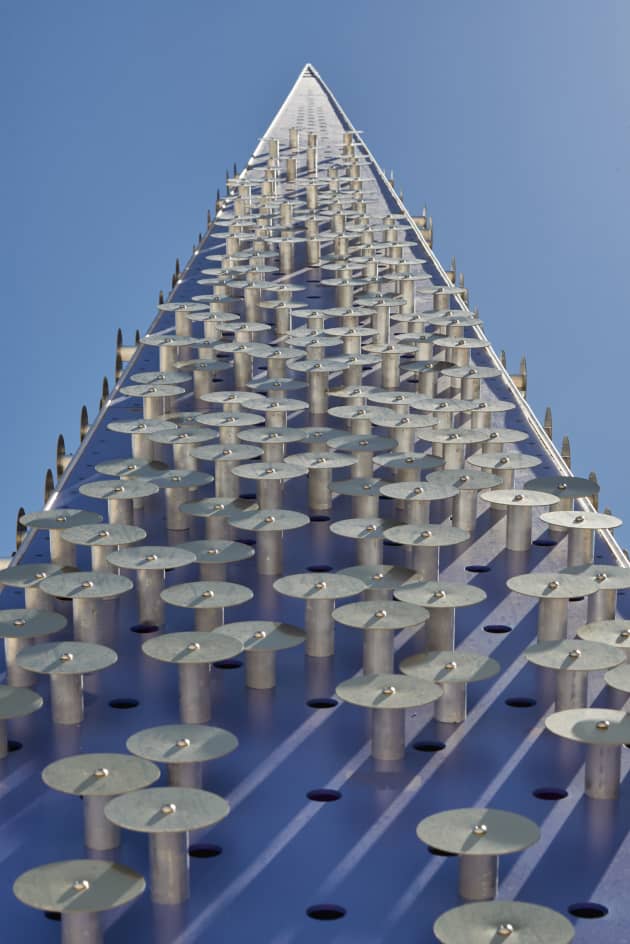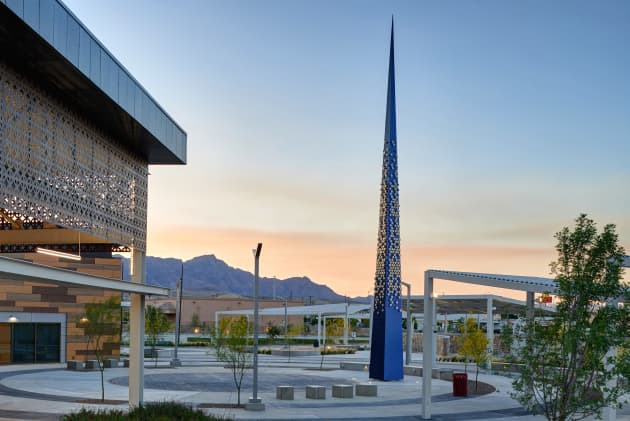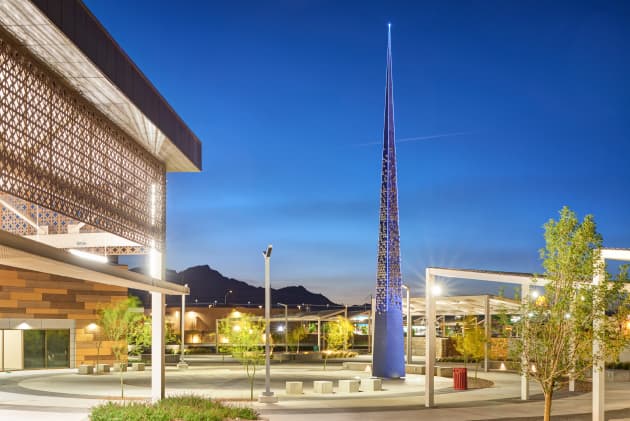


Client: City of El Paso Public Art Program
Location: El Paso, TX, United States
Completion date: 2017
Artwork budget: $200,000
Project Team
Artist
Jim Hirschfield
Artist
Sonya Ishii
Overview
Torre de las Flores commemorates the 1950s icon for Sunrise Center in Northeast El Paso and the fields of yellow poppies. The structure is adorned with perforated gold metal discs that will move freely in the wind, and glimmer with the light of the sun. The piece will be the focal point of the plaza at the new Arves E. Jones Sr. Transit Terminal at Northgate
Goals
Torre de las Flores is the public art component of a new transit oriented development. Once it is complete, this area will be transformed into a mixed-use venue offering retail and residential spaces anchored by the Northgate transit terminal. The plaza will serve as the focal point of this development with Torre de las Flores serving as a landmark both visually and physically.
When planning the artwork, the city and the artist team understood the importance of having a piece that would tie the development together as it grows and serve as an iconic piece that is representative of the northeast part of town. During the spring, the northeast face of the Franklin Mountains is often blanketed by fields of golden poppies that are native to El Paso. The metal discs adorning the sides of the piece will move in the wind to mimic those poppy fields. Long-time residents of Northeast El Paso will recognize a neighborhood icon when they visit the transfer center. Torre commemorates the spire that once beckoned shoppers to Sunrise Center. Once the transit center and surrounding commercial development are complete, Torre de las Flores will serve the same purpose.
Process
Because Torre de las Flores serves as the anchor for the new Northgate Transit Center and mixed use development, the artists and MCAD had to work closely with Sun Metro to ensure the art piece would complement the completed development. This was accomplished by incorporating iconic images from northeast El Paso into the artwork. Like all the city’s public art projects, there was an ongoing dialog with the community as the artwork moved from concept to reality.